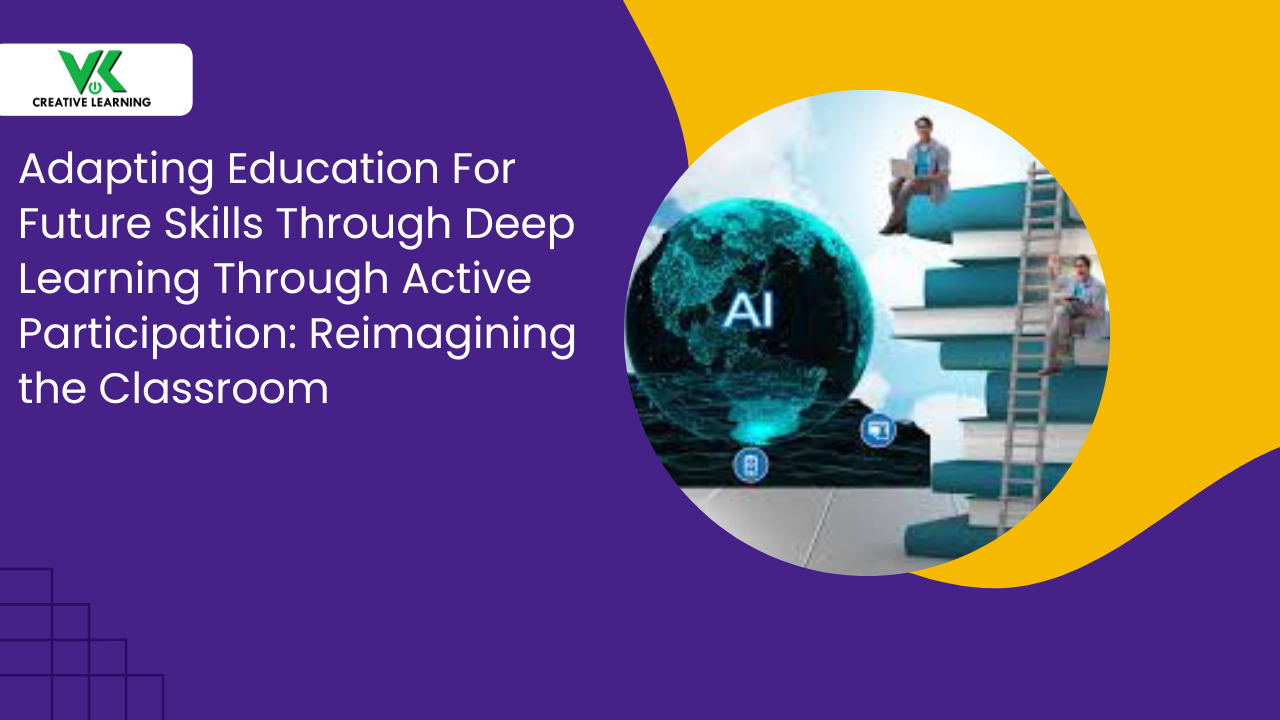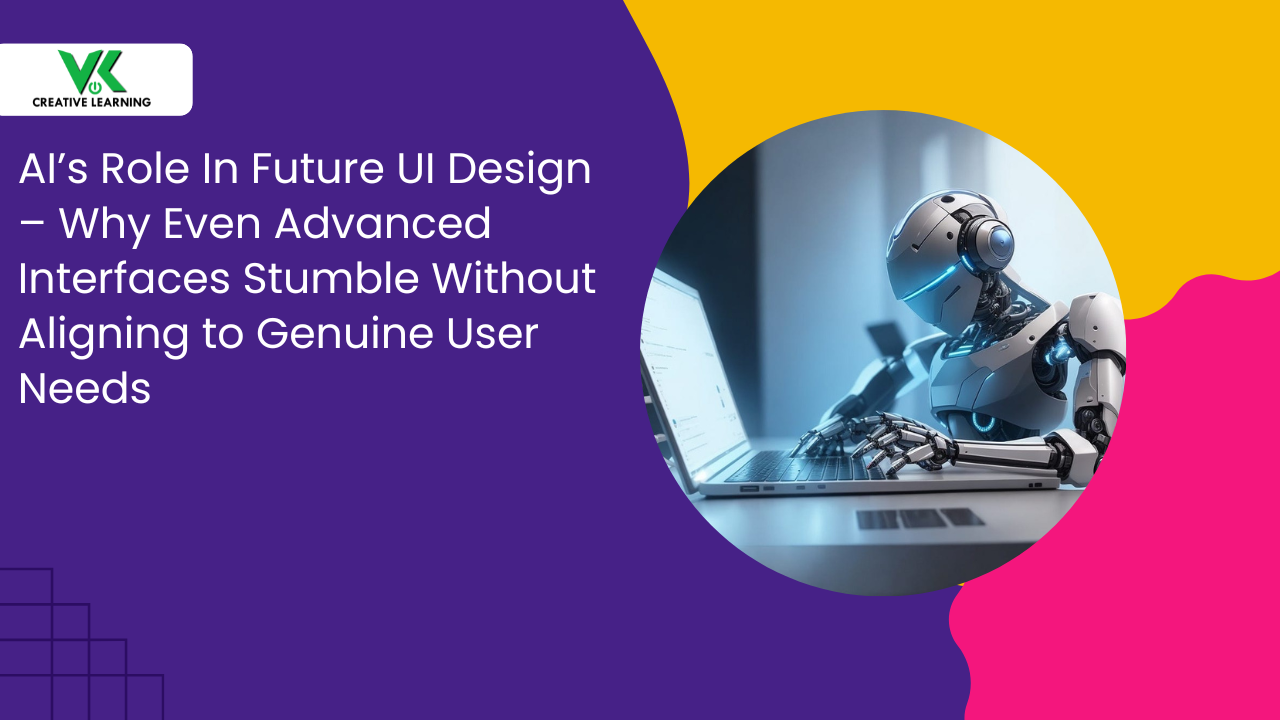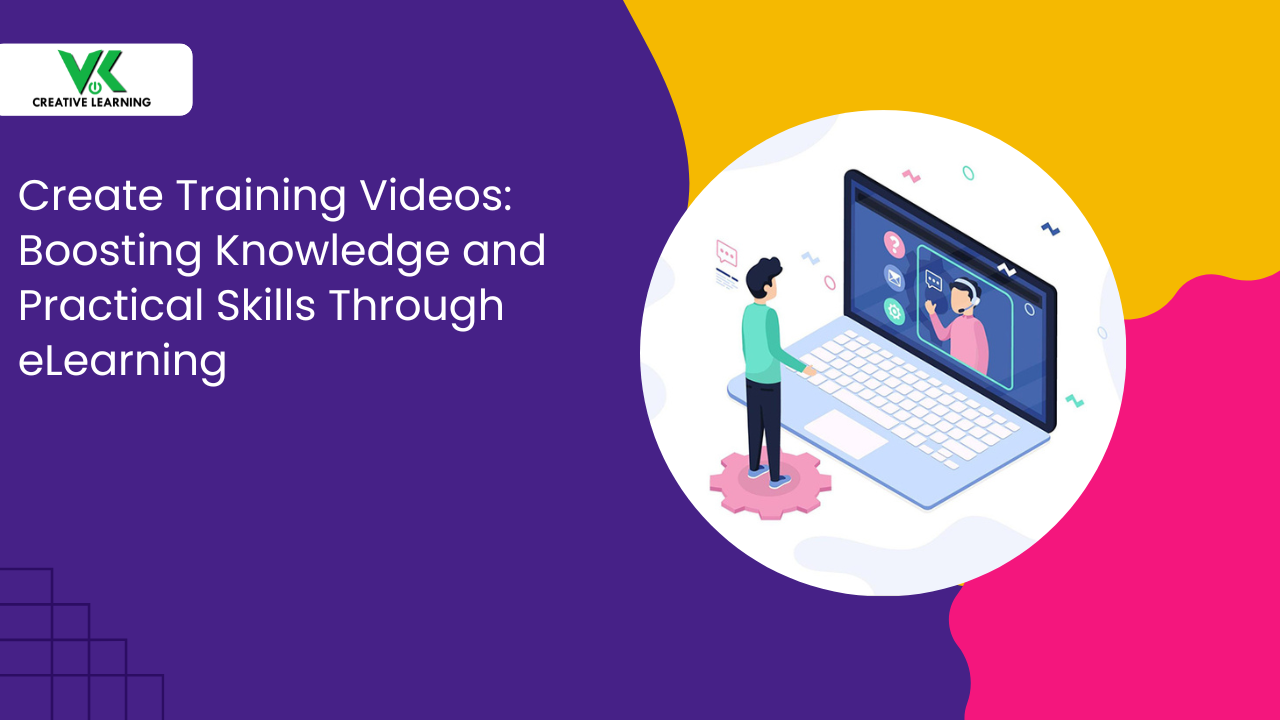How Artificial Intelligence in E-learning + AI in Education Enhances the learning Experience
May 31, 2025
New e-learning strategies are carving out new, innovative methodologies for training and teaching. Thus, there are many credible alternatives emerging, threading multiple technologies. Hence, smart devices, cloud tools, and AI-based platforms are used for the same. In fact, technologies and platforms are spun into various topics of training and education.
Therefore, every now and then, digital platforms are released with interactive tools (virtual whiteboards, AI mentors, and gamified quizzes). Reason: they help to trim down unnecessary clutter and aid to streamline content flow. This results in purpose-driven (goal-oriented learning), analytics-powered (progress tracking), and insight-specific upskilling efforts.
Among all, one of the forward-thinking platforms that stands out is Artificial Intelligence in e-learning. The virtual platform contains LMS dashboards (with multiple features), VR/AR course learning, and 3D animations.
They also consistently link work-based realism with theory using sensory-rich simulations and intuitively involving elements. In addition, they deliver hands-on virtual experiences as it happens in the actual workplace -- tactile and rich in knowledge. By doing so, they aid to expand learners’ self-assurance, boost knowledge base, and improve task-specific proficiency.
The ever-widening expanse of flipping old systems in the workforce helps to enrich employees' knowledge. This way, the information also sticks in people's memories. The expertise and skills get etched in the workforce swiftly. This also assist to breeze through job-related hurdles.
Similarly, learning institutions (education providers, academies, and training units) can work on skill-building programs for students using e-learning-based AI in education
The AI is programmed into e-learning in such a way that the content can be remodeled. Additionally, content can be creatively refined as when needed. Students also learn about industry standards, and they are readied for the workplace.
Table Of Contents:
Understanding AI in Education/Learning and Development
- Detailed Insights
- Adaptive Content
- Pattern Extraction
- Personalization
- Smarter Learning, Powered by AI Precision
- Robotics: The Repetitive Task Slayer
- Predictive Analytics: Charting Learning Journeys
- Error-Free Learning with Less Human Interference
- Rewriting the Rulebook with AI-Driven Digital Learning
- Tailoring AI in Education, and Learning and Development
Benefits of AI-Based E-learning in Higher Education and Workforce Training
- Enhancing Academic Engagement and Retention
- Powering Up Workplace Learning with AI Precision
- Widening Skill Horizons through Smart Training
Understanding AI in Education/Learning and Development
Artificial Intelligence in education (or AI in learning and development) has the capability to change the tide. It is particularly useful for students and employees when it comes to learning.
Detailed Insights
Detailed and data-backed insights (learners’ engagement patterns, real-time assessment scores, concept retention rates) are provided.
Consequently, the aspect cracks open precision-based growth -- tuning performance based on data.
Adaptive Content
What distinguishes e-learning-based AI in education is, it transcends the conventional approaches. This way, what happens is: faster learning development – how wonderful is that?
It incorporates adaptive content (customized lesson formats, difficulty-based exercises, smart quizzes) when instructors require.
This content bends to learners’ pace (slow and fast) and preferences. Most interestingly, these platforms analyze pupils' performance (response accuracy, speed metrics, behavioral patterns) closely.
Pattern Extractions
AI in learning and development contains algorithms that extract patterns to reveal two essential aspects. They are learners’ strengths (creative problem-solving, grasping speed, logical reasoning). Also, the platform exposes knowledge-gainers’ weaknesses (low retention, test anxiety, topic gaps).
This eagle-eyed analysis provides customized (student-specific, skill-driven, performance-aligned) training recommendations. They can be microlearning e-learning modules, video tutorials, or reinforcement modules.
Personalization
Students can be catered with personalized (data-enriched, user-specific, milestone-mapped) learning journeys. Also, they offer growth plans, knowledge trails, and skill ladders that are fine-tuned to complement their developmental needs. Additionally, personal learning preferences, progress levels, and comprehension gaps are also taken care of.
Smarter Learning, Powered by AI Precision
The tactical roll-out of AI into L&D and education e-learning offers trainers algorithm-guided command centers. This encompasses tools to check in on, sift through, and smoothly adjust learning modules on the fly. This helps to make rapid decisions on lecture delivery or content modification.
Robotics: The Repetitive Task Slayer
Infusing Artificial Intelligence into an e-learning platform propels the learning pace. Consequently, knowledge-acquisition drag is eliminated. Also, admin tasks such as data entry, attendance tracking, and assignment grading can be automated.
This is more like introducing robotics in learning and development to get tasks auto-done. E-learning-based solutions, involving AI in Learning and Development, perfect analysis accuracy. The performance of learners improves with precision-honed content delivery (detail-calibrated, target-sharp) services.
Predictive Analytics: Charting Learning Journeys
The utilization of AI engines re-engineers learning routes (learning paths, progress journeys, outcome ladders). This happens owing to the forecast-focused algorithms (anticipation-led, trend-reading, preemptive-strategy).
Additionally, data scrutiny (progress graphs, learner metrics, dropout predictors) takes place in AI-based e-learning. This AI-fueled mapmaking affirms that each learner flourishes within their full skillscape.
Error-Free Learning with Less Human Interference
AI in education (or AI in Learning and development) massively cuts down the level of human meddling (manual input, staff surveillance, teacher-led updates). Thus, owing to the intervention, errors (entry slips, grading errors, timing lapses) can be drawn down.
AI is also geared to smartly fine-tune what learners receive (training media, academic texts, skill tasks). The programming in Artificial Intelligence in e-learning is done to be relevant (maintain freshness of content, accuracy, timeliness) with market needs. This serves as an emotional tie when it comes to understanding of content -- personalized power tools.
The synthesis of multiple tech and teaching methodologies (instructional design, learning science, curriculum model) provides a comprehensive virtual platform.
Rewriting the Rulebook with AI-Driven Digital Learning
When it comes to standard training norms (classroom structure, linear syllabus, fixed pace), AI-based e-learning helps to enhance learning. In fact, its computation capability shifts gears toward replacing chalkboard days. Additionally, virtual content and lectures substitute lecture halls and a rigid form of instruction.
Interestingly, complicated concepts (quantum theory, financial modeling, advanced coding) are explained through multiple elements. Through hands-on practice (game-based components, 3D animations, voice-activated mentors), AI in L&D/education enhances understanding.
These elements – storytelling, 3D explainer videos, simulation-rich, and responsive design -- make comprehension easy.
The e-learning also includes quick-recap lessons and feedback loops, adapting to the learner’s speed, style, and retention capacity.
Tailoring AI in Education, and Learning and Development
Artificial Intelligence in e-learning also contains algorithms that analyze and sift through a plethora of learners’ data. This includes activities, previous learners' history, and patterns of learners’ responses. This plays a big role in changing and upgrading the existing content. These changes are made in diagrams/infographics, interactive quizzes, and summaries.
Importantly, they help to improve comprehension capabilities – result: clarity with long-term remembrance of concepts.
The AI-driven e-learning platform additionally entails a do-to-know (projects based on scenarios) approach. The field-tested ideas drive retention among learners.
Notably, the textbook style format (definitions, examples, diagrams) is supplied with engrossing and elaborate content.
This helps employees and students immensely in solving real-life problems or relating concepts to realistic life.
AI in e-learning can assist salespeople to understand sales pitch issues and customer conflict cases. Similarly, with AI-powered e-learning, algorithms can help professionals to enhance coding and find bugs.
This renovation through AI in e-learning can also aid in structuring the pedagogical groundwork. This helps to smooth kinks in an organized manner -- refining topics, lessons, and courses.
Benefits of AI-Based E-learning in Higher Education and Workforce Training
Enhancing Academic Engagement and Retention
With Artificial Intelligence in e-learning, academic institutions and firms can enrich the learning experience of the learners. The e-learning-based algorithms provide interactive learning modules in the form of gamified lessons, multiple types of quizzes, and more.
Introduction of such elements helps to remember the concepts explained by the instructors. Importantly, Artificial Intelligence in e-learning provides detailed insights about learners' progress.
This helps to tweak plans and come up with customised learning strategies so that their skill level can be improved. The intelligent algorithms also provide suggestions and goals so that the learner can smoothly go through the course.
This kind of simplified content ensures that boredom is not induced in the students or overwhelmed by the jargon and technical terms.
Essentially, the digital content for students and employees goes beyond being just flashy and enhances long-term understanding.
Powering Up Workplace Learning with AI Precision
With AI in learning and development, it becomes possible to train employees on the latest technologies swiftly. This helps to improve their understanding about the workplace, and thus, their productivity increases significantly.
Importantly, the AI-based e-learning platforms encompass multiple features with the integration of an automated LMS. This means that students get to access a wide range of interactive modules and AI-based suggestions as when required.
Such intelligent algorithms also provide real-time tutoring and ensure that the skill gap is reduced.
What follows is: integration of AI in L&D, also ensures that the onboarding of new employees takes place smoothly.
Widening Skill Horizons through Smart Training
The knowledge of the employees is widened with artificial intelligence in e-learning courseware. The predictive modules and intelligence analysis systems are present within AI-based e-learning.
This helps them to navigate through tough terrains (complex topics and lengthier content). Also, this aids to fill up the big gap that exists between the theory and the practice as far as employees' learning journey is concerned.
Additionally, employees are provided with hands-on elements that ease the task of connecting different concepts. This is in a way an advanced way of up-skilling the employees so that they can be on par with the market expectations.
The interactive elements also present different emulated scenarios and case studies. This helps new employees to know how exactly processes happen in the workplace.
Each module contains goals linked with tracking features and feedback, which helps to understand individuals' capabilities. Accordingly, once the strengths and weaknesses are identified, employees can be fine-tuned accordingly.
The sculpting of professionals into assets takes place in the succeeding training sessions. Then, they are ready to take on any kind of challenge.
Conclusion
With the fusion of AI into education and AI in learning and development, it becomes possible to render learners with the required knowledge. This happens smoothly, and importantly, the bridge between the theory and workplace scenarios can be developed.
Companies looking out to incorporate AI in e-learning can approach VK Creative Learning (VKCL). This is an e-learning company that provides customised AI e-learning platforms based on the requirements of the educators and firms.




